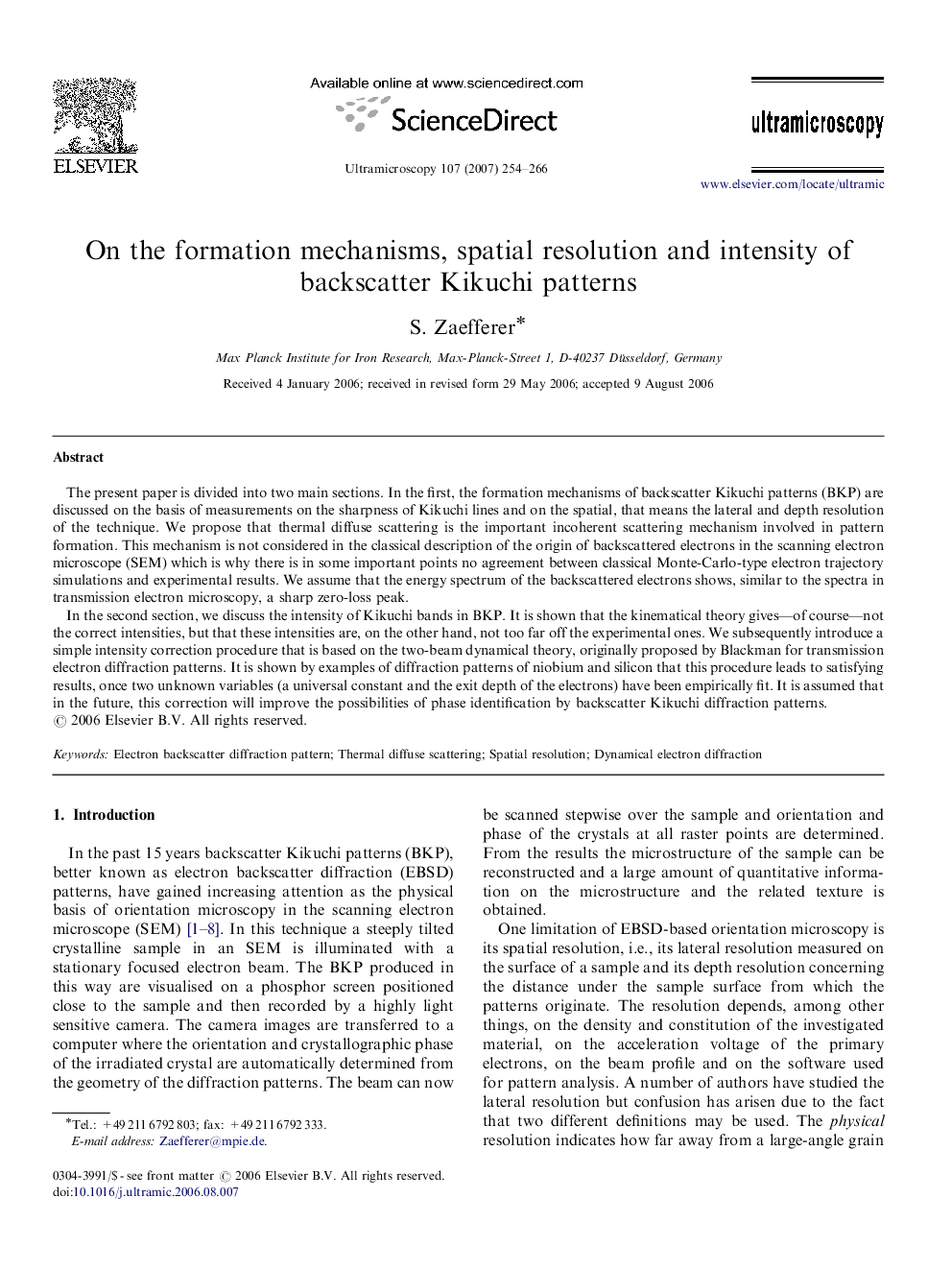| Article ID | Journal | Published Year | Pages | File Type |
|---|---|---|---|---|
| 1678706 | Ultramicroscopy | 2007 | 13 Pages |
The present paper is divided into two main sections. In the first, the formation mechanisms of backscatter Kikuchi patterns (BKP) are discussed on the basis of measurements on the sharpness of Kikuchi lines and on the spatial, that means the lateral and depth resolution of the technique. We propose that thermal diffuse scattering is the important incoherent scattering mechanism involved in pattern formation. This mechanism is not considered in the classical description of the origin of backscattered electrons in the scanning electron microscope (SEM) which is why there is in some important points no agreement between classical Monte-Carlo-type electron trajectory simulations and experimental results. We assume that the energy spectrum of the backscattered electrons shows, similar to the spectra in transmission electron microscopy, a sharp zero-loss peak.In the second section, we discuss the intensity of Kikuchi bands in BKP. It is shown that the kinematical theory gives—of course—not the correct intensities, but that these intensities are, on the other hand, not too far off the experimental ones. We subsequently introduce a simple intensity correction procedure that is based on the two-beam dynamical theory, originally proposed by Blackman for transmission electron diffraction patterns. It is shown by examples of diffraction patterns of niobium and silicon that this procedure leads to satisfying results, once two unknown variables (a universal constant and the exit depth of the electrons) have been empirically fit. It is assumed that in the future, this correction will improve the possibilities of phase identification by backscatter Kikuchi diffraction patterns.
